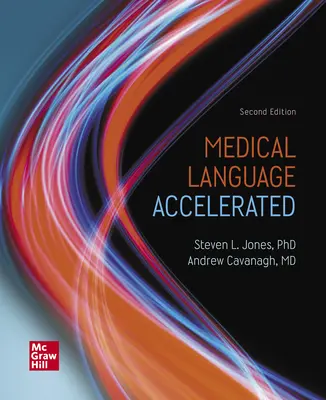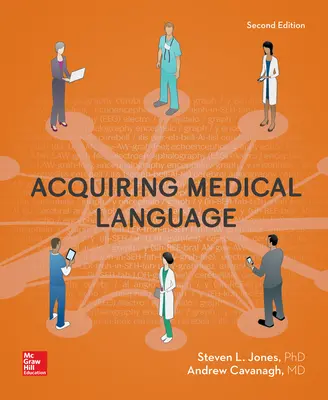The Linguistic Approach found in Acquiring Medical Language
Published October 19, 2020
Acquiring Medical Language bridges the gap between the two somewhat disparate fields of study that make up medical terminology: medicine and languages. Instructors with science/medical backgrounds want their students to learn to speak the language of medicine but are unfamiliar themselves about the origin and meaning of the roots. They teach what they know, which is the medicine, turning the course into an extended memorization drill, which fails to equip the student with the ability to decipher the meanings of medical terms. Instructors with language backgrounds have limited knowledge of the medical field, so they too teach what they know – word origins and roots – but avoid focusing on the medical application because it is outside their field of expertise. The result is a class which does not adequately assist in the professional training of the student. Acquiring Medical Language solves this problem by providing assistance in languages to equip health care professionals to teach a useful skill and not just lists of words. It also equips language professionals with the real-world examples to make their knowledge of languages applicable to careers in health professions.
Top 3 reasons students love the Linguistic Approach used in Acquiring Medical Language
1. It makes medical terms easier to understand.
Instead of trying to memorize every word in a never-ending vocabulary list, the Linguistic Approach teaches students how to break down words into their component parts. Instead of blindly trying to memorize hundreds or thousands of words, the Linguistic Approach equips students with several dozen roots, prefixes, and suffixes and shows students how to assemble these word parts to produce all the terms other books try to make them memorize.
2. It makes learning new medical terms easier.
By training students to dismantle words and translate the parts, students gain confidence in figuring out the meanings of new words as well. When faced with a new medical word, many students panic or freeze up or think they don’t know it. Students trained using this linguistic method are able to tackle any word, no matter how long or seemingly confusing, break it down, and figure stuff out. What was once a daunting exercise becomes a bit of a game as students are eager to see if they can figure out what the word means just by breaking it down.
3. It makes learning medicine in general easier.
Learning any language ends up teaching a person a lot about the culture that produced the language as well. The same is true with the language of medicine. Very often, simply knowing the word of something will give students insight into how it functions or contributes to overall health. Simply being able to speak the language of medicine with confidence gives students a window into the field of medicine that many lack.
Medical terms aren’t words to be memorized. Each term is a sentence to be translated. Think of it this way: If you were taking a trip to another country, you might try to memorize a few key words or phrases. It might be useful to know how to say common things like “Where is the bathroom?” or “How much does this cost?” But if you were going to live in that country for a while, you wouldn’t just try to memorize a few stock phrases, you would try to learn the language so you could understand what other people were saying.
The same is true of medicine. Think of medicine like a culture, and medical terminology is the language people speak in that culture. If you are just visiting on a routine appoint, you might not need to learn the language. But if you want to have a career in medicine, that means you want to live in the culture of medicine. To do so with success, you must learn to speak the language. By learning the way the language works, you will be able not only to know the meaning of a few individual words, but also to breakdown and understand words you have never seen before, and even generate words on your own.
Acquiring Medical Language teaches medical terminology as a language, giving students the ability to understand and to have confidence in using the most complex-sounding medical terms. The linguistics-based approach teaches students to break words down into their composite root words. Instead of a dictionary full of terms that need to be memorized, a student, equipped with groups of roots, can easily understand a vast amount of medical terminology.
The process is best illustrated by considering the following word:
Pneumonoultramicroscopicsilicovolcanoconiosis
Any first-year health career student is likely to be intimidated by having to learn terms like this. Many medical terminology books simply teach students to memorize lists of definitions of words like this one grouped by body systems. However, if one treats medical terminology as a language and learns how to read terms like sentences, the meaning becomes transparent. If you break it into its composite parts, you get:
pneumono / ultra / micro / scopic / silico / volcano / coni / osis
lung extremely small looking sand volcanic dust condition
Through knowledge of roots and word formation, the meaning becomes clear: “A condition of the lungs caused by extremely small bits of volcanic sand.” Instead of having to memorize a long list of even longer words, a student equipped with the knowledge of roots and how to break apart words can tackle and not be intimidated by the most complicated sounding medical terms.
To teach medical terminology as a language, Acquiring Medical Language adopts the following techniques employed in second language acquisition in order help students not just learn the roots but adopt a way of thinking and speaking which enables them to communicate using the language of medicine.
- Contextualized Language Techniques ("Real-World" Exercises)
- Link new language to old language – Pointing out instances of medical terms or roots in everyday use will enable the students to connect new information they are studying with information they already possess.
- Use new language in context – introducing the root words in the context of larger body systems and in relation to other root will enable students to understand the meaning of the term as they learn new things about the body system. Using realistic medical histories as part of the exercises will enable students to see the terms they use not as lists but as parts of a system of communicating.
- Decontextualized Language Techniques (Academic Exercises)
- Repetition – The students will be exposed to roots, prefixes, and suffixes multiple times and in multiple ways. Roots will be changed by the addition of prefixes or suffixes. Prefixes and suffixes will be applied to new roots. In doing so, the word components are continuously reinforced.
- Translation – The students will be asked to provide literal definitions of medical terms, which will provide practice in the skill of breaking words down into their component parts and determining their meaning.
- Generation – The students will be asked to produce medical terms based on the literal definition provided. Though this is only an academic exercise, such practice reinforces material learned by reversing the cognitive process of translation.
- Challenge – The student will be assigned a handful of longer-than-average terms and asked to break them down into component parts and translate them. A key component to teaching any language is helping students not feel intimidated by new material. One method is by periodically challenging them to tackle situations which may at first appear overwhelming.
Testimonials from Students
I used Acquiring Medical Language in a medical terminology course as an undergraduate student. The approach of piecing apart medical terms using roots, prefixes, and suffixes has been an incredible resource in medical school. Even if I don’t recognize a medical term, I frequently can figure it out by separating it out into its constituent pieces!”
– Matteo Costantini, 2nd Year Medical Student, Kansas City University of Medicine and Biosciences
“This method of teaching medical terminology made the material so much easier to not only learn but to remember long term. Instead of memorizing random vocabulary, we learned how to actually break down the words and understand why they made sense, and that knowledge has stuck with me years after taking the class.”
– Brooke Evans, undergraduate, Rice University
“Upon starting medical school in the classroom, and again when beginning clinical rotations, a big challenge that students face is simply trying to understand the complex and fast-paced language of medicine that professors and attending physicians use. This approach to teaching medical terminology has allowed me to break down new, unfamiliar terms that have come up throughout my four years of medical school.”
– Andrea Amaro, 4th year medical student, McGovern Medical School at UTHealth, Class of 2021
"This approach often makes the connections and underlying pathways of disease very evident within the patient, functioning as a second language for professionals and avoiding the fruitless memorization that many students attempt in medical school."
– Allen Fellers, 1st year Medical Student, Texas Tech University Health Science Center

Steven L. Jones, PhD
Steve holds a BA in Greek and Latin from Baylor University, an MA in Greek, Latin, and Classical Studies from Bryn Mawr College, and a PhD in Classics from the University of Texas at Austin. Steve currently teaches Medical Terminology at Rice University in Houston, TX. He has held previous faculty appointments at Trinity University, the University of Texas at Austin, Baylor University, and Houston Baptist University. In addition to Medical Terminology, he teaches courses on Latin, Greek, Mythology, Classical Civilization, and Early Christianity. When not breaking down medical words, Steve enjoys taking road trips with his wife and six children, watching baseball, eating tacos, drinking icecold Dr Pepper, and showing off his parallel-parking skills.


